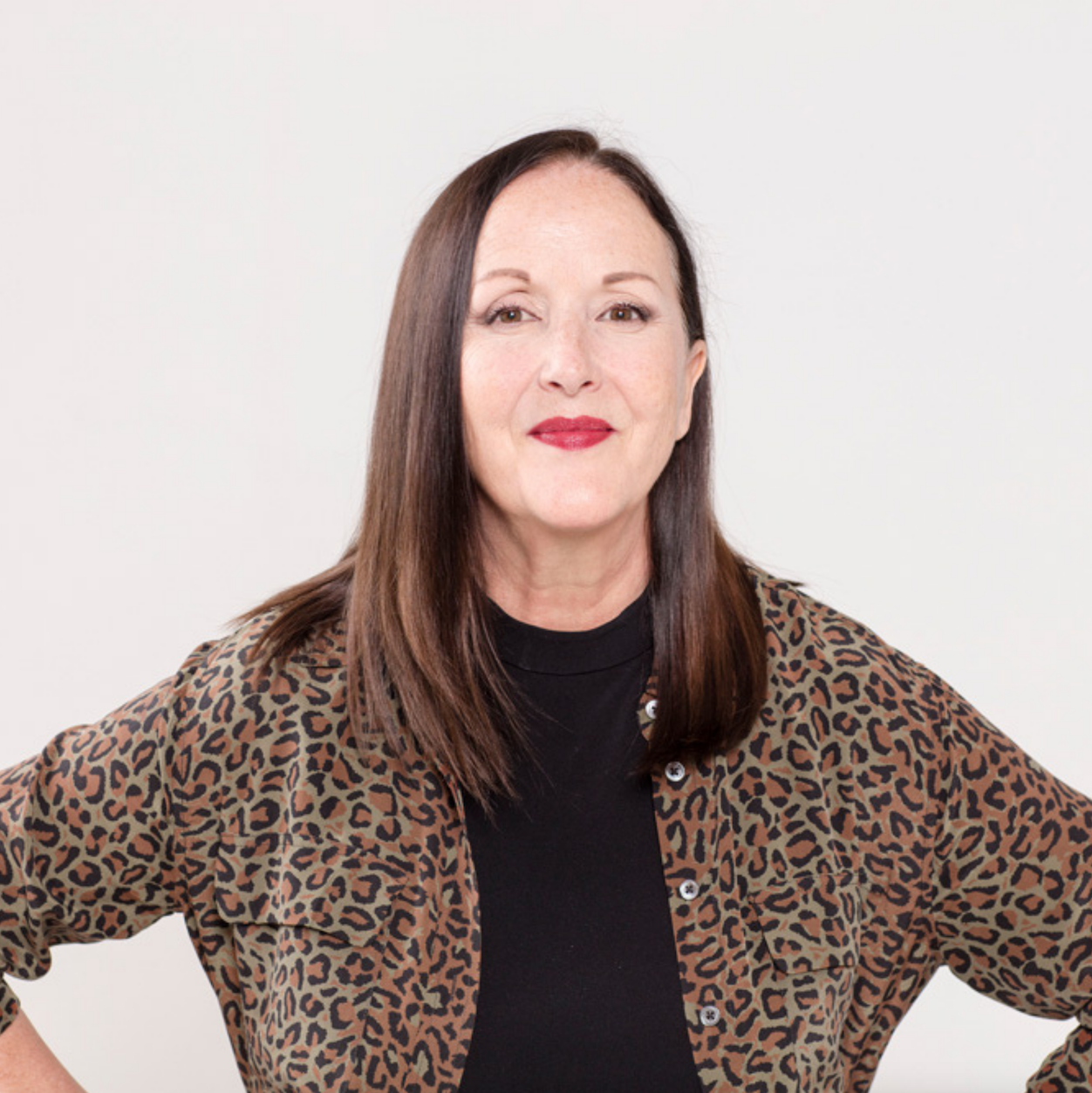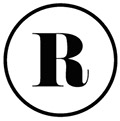
The doyenne of fashion writing in Australia, Janice Breen Burns on her process and what it takes to be a great fashion writer.
This month’s Press Circle guest is a highly respected, fashion journalist, editor and features writer who’s made an enduring contribution to the Australian fashion industry. Her rhythmic and relatable words have been enjoyed by generations, notably via the metro daily newspapers throughout her career, including a remarkable near-two decade tenure at The Age and associated Fairfax Newspapers (including: Sydney Morning Herald). Among many things, this exceptional talent is admired for her ability to make writing about fashion and art, art itself. So it’s with great pleasure that we welcome the doyenne of fashion writing in Australia, Janice Breen Burns to Press Circle.
Mrs. Breen Burns (also affectionately referred to as JBB, or simply Janice or Jan) has a unique ability to write about far-reaching fashion world experiences and observations and make them accessible and significant to the masses. She’s able to ask tricky questions while observing the tiniest of important details, all paired with deep industry knowledge, poetic phrasing and wit. She uses fashion as a conduit for a peep into everyday life, which make her way with words matter. Her formidable commentary nourishes audiences with all sorts of sub contexts that explore how fashion and design reveal certain attitudes and cultural beliefs happening in modern society.
With a dedicated passion for the significance style has as a cultural mirror to how we live this iconic and influential writing gem helped transform the perception of fashion and its relevance to news in Australia. And in the halcyon days of print newspapers her efforts culminated in writing, editing and curating multiple broadsheet pages a week for art-lovers and culture-chasers who came to rely on Jan’s sartorial and aesthetic insights and of course for the deeper meaning behind them, or simply for some escapism.
In her early career in the ‘80s Jan was women’s editor at the Geelong Advertiser, before moving onto the Sun (now known as the Herald Sun) and then later The Age and Fairfax. Shewas a founding member of the Victorian Government’s committee to address the impact of media on body image, has been inducted into the Stonnington Fashion Hall of Fame as well as been appointed to the board of Melbourne Fashion Festival.
In 2013 she moved away from her regular newspaper column life and the no-doubt relentless cycle of metro daily press demands and founded Voxfrock – an online destination for fashion and pop-culture journalism. Voxfrock brings high-quality, newspaper style reporting to the digital world and peg-marks trends from Melbourne to Milan and all ports in-between.
Jan now splits her time between writing commissions, editing Voxfrock and generously sharing her knowledge with wannabe writers through her Voxfrock Rookie mentoring program. She alsohosts a regular networking event called FashLab – a ‘just come along’ virtual catch-up for emerging and established fashion design and ragtraders seeking camaraderie and connection.
Jan is a sought-after contributor to workshops and seminars, industry panels, radio and television reports on all things fashion and its surrounding culture, having earned a reputation for her expansive fashion and art-history knowledge. It is without doubt that this is a special person with incredible dedication to giving back to an industry that she has helped to shape and that has helped shape her.
So it’s my great pleasure to welcome gifted observer, researcher, reporter and much-adored, writing talent, who can wrangle words, perfectly-partnered in ways you’ve never seen before, as they fall off the page and out of your mind; one of my personal writing heroes, Janice Breen Burns.
Jan was warm, witty, down-to-earth and delightful. And I’m glad to be sharing her thoughts and insights across decades as a fashion editor with you via Press Circle today.
Our chat has been transcribed below.
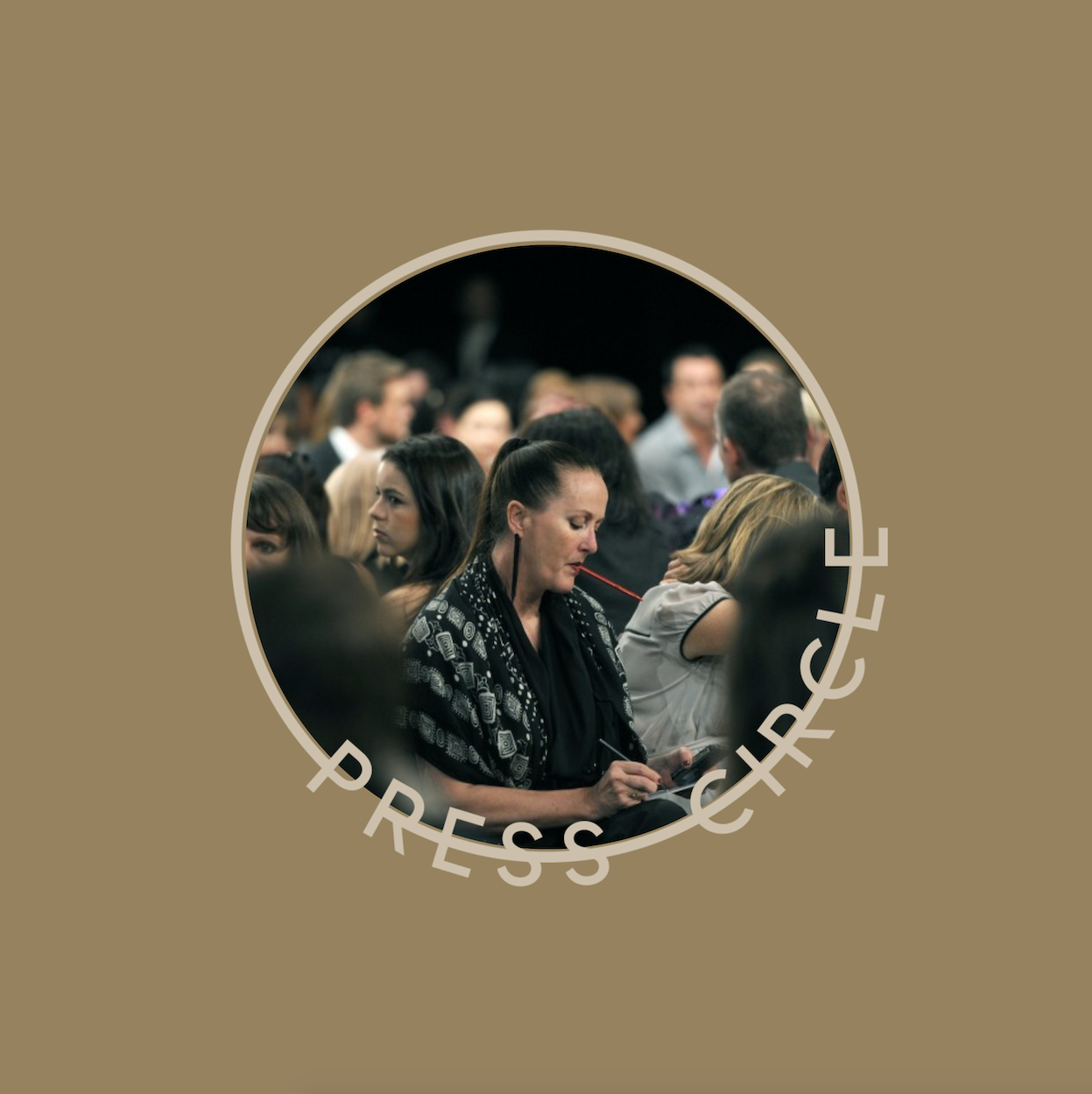
Tell me about what you’re up to at the moment…
I’m still working as a freelance journalist, in the fashion and art space and just carefully choose my commissions these days. Whereas you can’t so much when you’re an employee.
I was writing essays for the National Gallery magazine, and more recently I’ve been writing for Spectrum (a section in The Saturday Age, Melbourne), which is also on their digital platform nationally (for Nine/Fairfax), and it goes into the Sydney Morning Herald too.
I also have a program called The Vox for Rookies, which I’ve been running for about six years now and since I left The Age six or seven years ago. It’s for university journalism graduates who are interested in fashion journalism. Oh and I run master classes for them. because as far as I know there’s no university class as such that specialises in fashion journalism, so it’s to add to those with interest in fashion writing specifically.
You’re also running your regular FashLab catch-ups. How long have they been been going for? It was long before Covid times and before online events were a thing?
Well they’re not really events just get-togethers. Catch ups, really. I’ve been running them online since October last year, so it’s been a year.
It’s a textiles and fashion industry catch-up where we talk about anything and everything in general. I started the community when I stopped working full time.
It’s not a commercial group; it’s not meant to make anybody any kudos or money or anything; it’s just purely a community to stay connected and support each other. I’ve been in the industry and writing for so long so it was just a way to stay connected and share some of the things I’ve learnt along the way.
I’m a great believer in handing things on and making space for the next generation, that sort of thing. So it flashlights like-minded people usually established people in the industry.
Some young ones and newbies come along that are being mentored, and I like the idea of mentoring each other as well, because it can be really shitty working on your own.
And just at the moment with COVID-19. Oh my god, you know, talk about amplifying the problems! So, we set random topics and people just drop in and out.


I was a fashion design RMIT student, one-of-15 selected and then very quickly a massive failure when I realised I couldn’t sew a button or pattern-make. I switched into PR and learnt I’d rather write and PR fashion than make it myself. I’ve been reading your words since then, more than two decades! And I remember pitching my first story to you as a PR uni student at 20 years old, it was a story about emerging fashion design talent which you kindly ran for me, my first story. I looked forward to the Friday edition of The Age and your writing every week.
Those were the days when fashion was considered a relevant part of the news mix. At one point I had six or seven pages of fashion and arts in The Age and the Sunday section, then it was four pages. Towards the end of my tenure it just kept getting compressed and compressed into less and less space. And so, yeah those were the days where there was a massive amount on fashion.
I always describe your writing as ‘copywriting porn’ because it’s, informative enlightening, engaging. It’s always got such a beautiful state-of-flow but then bolstered by incredible knowledge around the garments themselves and how they came to life. You’ve got the ability to really observe, observe the most minor details of a situation, and then bring them to life as though the reader was there with you; and you can write about a topic that is beautiful but unreachable for many people in lots of ways. But the way you write makes fashion and art relatable and easy to connect to; so your words are all of that.
My question is this; can anyone learn to write like that, or is it a gift within, can it be taught?
That’s such a good question. And, and it’s the question that causes so much disagreement whenever I talk about this.
So for the Voxfrock rookies that have come through the program, what I do is; I run them through the Fashion Festival. We sometimes attend Australian Fashion Week as well.
And so we run them through those events. And mentor them along the way and team them up with photography graduates from RMIT so that they get a sense of how to work with a photographer.
I’m just using the rookies as an example but yes, with the right tools and support, you can learn to write well. In order to be a great writer, it’s really important to have good reading habits.
People need to be passionate and inform themselves and get around fashion and reading books. Because fashion is obviously not just about frocks it’s the visual expression of design.
And observing how that is playing out in different cultures, whether it’s western culture or wherever it is in the world. It’s important to be interested in how fashion connects to creative expression and the human condition and understanding how the process of writing is knowledge.
Writing is about joining dots between what and how; fashion is expressing itself in your frocks and trousers and writing it is to find why it’s expressing what it is at that particular time.

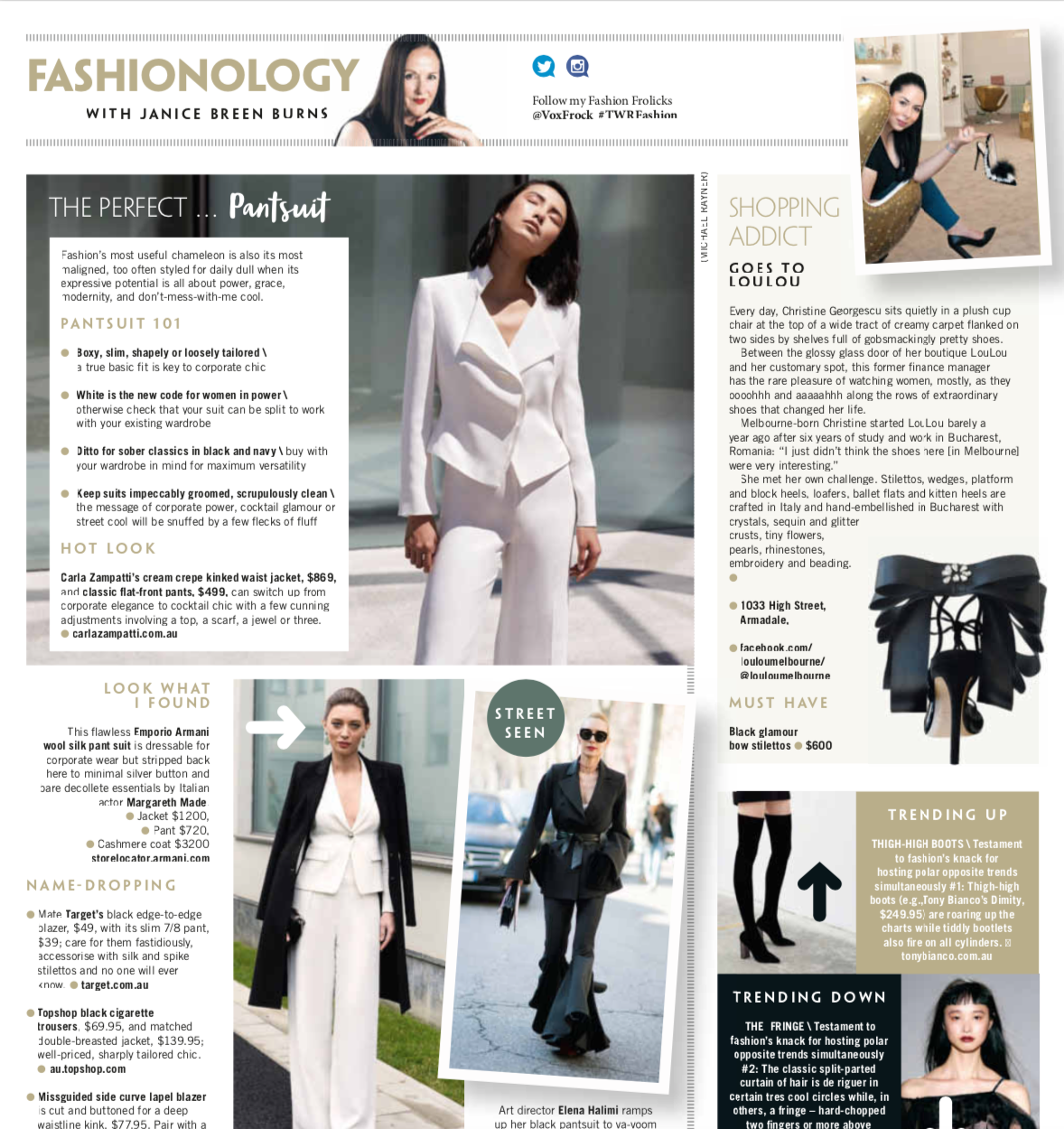
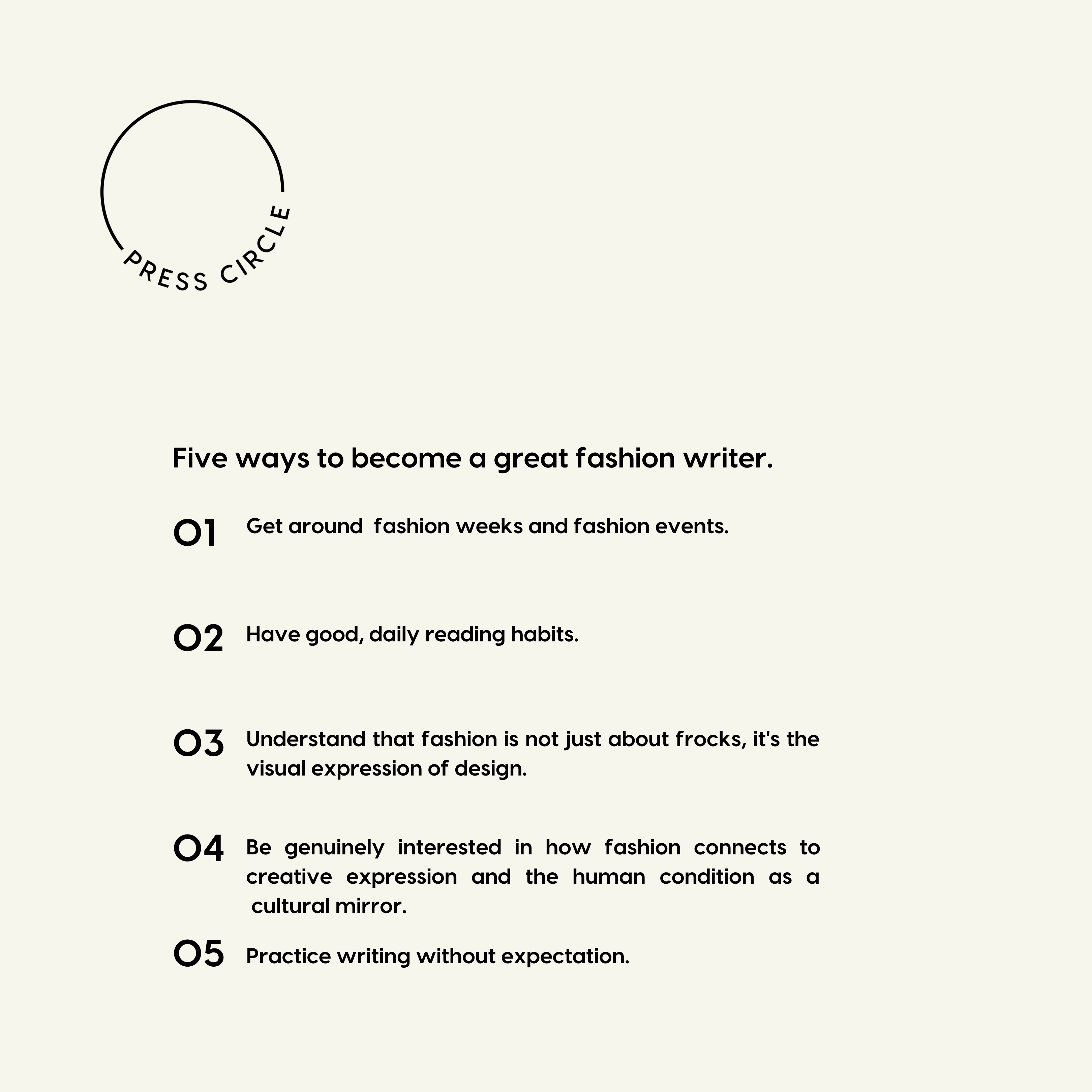
This is the same for PR. You must have an interest in content and media and as you say it’s really important to have genuine interest in reading…
Yes. Reading about fashion, art, history and the media; all of that it needs to be a habit. And that’s how rookies end up writing great stuff.
If you go to fashion week or fashion festival because you love fashion and you love writing; then suddenly you’ve got a conduit for that interest in that writing, and that passion. But if rookies go to these events without that passion for writing; you can’t teach them. You can’t teach them to write well. We have rookies that just go in for free tickets.
Ah, sure. I know what you mean.
Yeah, I’m not naming any names, but they know who they are.
It’s like the PR interns that say that PR is their dream job but then they’re not consuming content, they’re not seeking content, they’re not reading newspapers online or in print and mostly they’re not writing. You have to naturally be interested in writing and in the media and content in order to communicate and PR well. I guess it’s the same for you with the rookies.
It sounds like a perfect parallel. It’s connecting our territory. A similar context of what’s going on. So yes, you can. You can teach, but you really need 10 years, and thousands of hours to really perfect any skill.
There are some people who are natural writers and some that are not natural writers but are natural communicators. They’ve got the ability to creatively rise.
The naturally talented are not the only ones that can write and be fashion journalists. Anyone who’s genuinely passionate about it can do it. But they have to know it’s not just a bit of froth. They have to genuinely understand that fashion is a visual expression into the Zeitgeist of what’s happening in culture and history and insight into what’s happening with humanity at any moment. Fashion is reflective of the past and it’s also reactive of the now. If you understand all those tangles of complexity, you can be a fashion writer.
It’s so important to be able to write and communicate in this day and age where it’s a game of content. Everyone needs to play the game of content in order to build their business or generate awareness or manage their own media. And that’s why I was interested in knowing if you think it can be learnt; for people who don’t feel that they are natural writers.
I’m in the process of actually creating a program to mentor the rookies with story and reporting structure; the who, what, when, where, why, how to help support those interested in fashion journalism. Basically a simplistic guide to help with reporting style. There’s not really anything out there for young fashion journalists.
Will that be part of a program people can sign up for?
No, I’ll just make it available for anyone who wants it.
Hey, I wanted to mention, I saw your post on social media about that cruelty free faux leather bag (by Sans Beast) and I actually went out and bought one. If it’s the right influencer and you connect with them and their values and the values of the brand featured, it does work.
I don’t do that very often. In fact, you know, journalism is without fear or favour and all that. It’s not ethical, you’re not really allowed to promote particular brands or anything, which always made it interesting because we always had a very steady stream of freebies coming into The Age offices and that sort of thing. So there was always that dilemma about what to do about those things.
But you’re now independent and you genuinely had a connection with that item and thought it was good, you bought it yourself too.
Yes, I don’t do freebies but even when a freebie came in to The Age offices we’d distribute them to charities and such.
Hmm yes, the PRs of the land sending in media kits as news with an accompanying gift or product sample which could be seen as a gift, or a gift of persuasion…in order to get cut-through with the journalist, only for it to be turned away or donated. Ha!
For me, it’s one of the things that has always fascinated me about ‘confession journalists’ now. I don’t know what they do with all that stuff now. Particularly all the skincare.
We used to get thousands and thousands of dollars worth of skincare, hair care, makeup, all that sort of stuff and put them into hampers and give them to the hospitals or various charities. And tickets to events were often given away for auctions and things like that.
But every single time we gave something away. One of the provisos would be; I’d ask for a thank you letter so that we could keep a track of where the stuff was going and what was happening to it, and I don’t see that happening at all these days.
Fashion and lifestyle influencers of today must just get flung a lot of stuff. They make a living out of it I guess, so I think it’s fair and reasonable. That’s what their business model actually involves.
I don’t call it free stuff because in actual fact they’re supposed to tally it up and pay tax on it, you know, after a certain amount. But the business model is actually based on them being expected to do the ads for those products.
Hmm…yes, well that’s not journalism, that’s quite the opposite of journalism.

I agree, it’s not coverage based on editorial merit, it’s based on gifted freebies, paid sponsorship and ads…product placement.
It’s the business model. They get their product, they also get their fees. So basically, I think of influencers as billboards for your advertising. That’s it. That’s not journalism. It’s not impartial.
That’s right but I’d like to think that the influencers only take on the products and services they promote because they genuinely connect with it.
Do you know anyone who does that really?
If you get an offer from Louis Vuitton, but you weren’t particularly fussed about Louis Vuitton, would you say no? I don’t think so.
And that’s the ruse of the modern influencer business model to actually say ‘oh yes I really believe in this product’. I mean I’m a very cynical person but I actually think that’s bollocks.
I’d like to think that I only follow the ones that really do say ‘disclaimer this is a sponsored post’. I genuinely connect with it; the brand’s values and ethos align to theirs and mine. And definitely not the ones putting on a pretty dress to generate a pretty picture only – product with purpose. But it’s hard to know isn’t it. The lines can be blurred. The best way, is to seek influencers who are outward with their values and consistent with the brands they align with. Those brands also need to add value by way of content.
Well I suppose. You’re talking from a from a vantage point of knowledge, which I don’t have so I’ll, I’ll concede that because I don’t follow them.
As newspapers were contracting more and more around the world it was becoming very difficult to work in journalism as we went through round after round after round of redundancies.
One of the first areas of newspapers to fall was lifestyle and fashion categories. What was being done by this emerging class of influencers who were just writing ‘I love these I love that’ and they’d have a pretty face and a nice body and you know it was just, it was a tangle of ethics and values that was just at odds with journalists and journalism.
And yet when I used to go to functions or an industry event and influencers and journalists were all lumped together. And so I started to withdraw. I felt that my practices, my craft should be separate to that, and I still think that. I still think that.
We always had the separation between advertising and editorial we never ever let them blend because there was always this assumption that whatever you wrote about; your writing was from journalistic merit and editorial merit. And written factually. As well as researched and impartial.
I respect the influencers and I respect their business model and I’ve actually mentored quite a few of them, so that they’re able to write reasonably well. And I’ve examined their ethics. It’s different to journalism. But as you mention follow some that you think that are genuinely ethical and aligned to the products they support. I’m glad to hear that I’m really glad to hear that.
Well, I feel like that’s also as I get I’ve gotten older I’m more conscious of what I PR. Anything that’s made to last, and made consciously, thoughtfully, ideally locally and usually has an artist or local designer or local business behind it is really what I’m passionate about…
I love, I’d love to hear that Jade, as I said I have a great respect for the business model and I have great respect for some fantastic, particularly young women who are genuinely dedicated and passionate.
Alexia Petsinis (@alexiapetsinis) is just one off the top of my head.
I love her practice she’s very selective about the products she uses and I suppose in that context, she’s a very good practitioner of that profession.
And there are definitely others out there. It’s great to hear that, that culture is developing around influencers and that social media might move this way.
But, yes there is a difference between influencers and journalists. And it did bother me that we were constantly being identified together. Partly so, because so many of them can actually be bought.
It’s one of the reasons I started the rookies because there was so much appalling writing on social media, and I’m doing my bit to address that.

This is usually one of my first questions, but today my last; what are you reading, watching and loving right now?
I have a very deliberate sort of range of reading material and reading practices; I read all the papers every day. But I also like to read books, and I constantly tell the rookies that you must read books to develop your vocabulary.
But one of the things that I do is, I read the same books over and over and over again. I also read new books. But Patrick White’s, Voss. I finished it again about three weeks ago and I think that was the fifth time since I was in my 20s.
Also The Tree of Man, I’ve read that about four times. As well as Tim Winton’s, Dirt Music I’ve read that about four times.
What about these books do you like in particular that has compelled you to read them repeatedly?
I read new books all the time as well but I go back to the classics, because I get a certain sense of rhythm when I’m writing and colour and pace and quite often it’s related to these books that I constantly read.
Oh I love that. Talk me through your actual process and your environment with how you set yourself up to work; do you put the diffuser oils on and is there music playing? Is there a ritual or do you just dive in?
I’m very deliberate.
This is something we can get through very quickly because it’s never changed in 40 years. I still write the same way.
I do a massive amount of research, probably more research than I need because I’ve got a bit of OCD and perfectionism; I’ve never been able to get rid of.
I do more interviews than I have to; I transcribe all my own interviews, but I’m trying not to that because it’s so laborious.
I print everything out so that I have the equivalent of a small book. And then I go through and I plan a story – say if it’s a feature story.
Then I do pages and pages and pages of notes. I set out the structure of the story.
I highlight things as part of the planning and then start writing. And I write with swimmer’s ear plugs in.
I quite often have the TV on; usually Parliament question time. Just to not feel quite so isolated if I look up. And I have the swimmers’ earplugs in because that makes me feel like it’s just my headspace and that’s all.
And when I was at The Age I used to also wear sunglasses. So that I couldn’t see. I was aware of people around me but it was so I could get into the zone.
Well that would have been quite a vision in a humming editorial newsroom…
Jade, you know what my life at The Age was like. We all worked in open plan. It was only in the very early days that I had my own office.
And then we went into this open plan style, I’d have three or four people coming up to me when I was on my writing days.
They’d say, “oh, you’re wearing sunglasses inside?”
I’d say “what?” I’d have to take my earplugs out, and my sunglasses off. I’d say, thanks for pointing that out. They’d break my zone.
I know I probably looked like some sort of idiot. But that was fine. Because that’s the way I work. And that’s why now I like the TV on, because it helps me to feel that there’s something else happening outside of my bubble. I don’t wear the sunglasses at home but I still wear the earplugs.
So that’s my process. And I redraft and I redraft and I redraft.
When I was working at The Age, obviously I didn’t have chance to do that because you have to justify your wage.
At the moment I’m really just writing one or two jobs a month. I’m writing because I love it, and because I love the subject matter. So I’ve got more time to perfect it and get it to the point where I’m happy with it.

Did you ever write about other topics outside or fashion, art, culture and trends, which obviously you could?
Yes in my early days I was reporting on stories as the women’s editor for the Geelong Advertiser. About things like gender selection, in-vitro fertilisation and the ethics around them. And I often reported on things for the Country Women’s Association – afternoon teas and also doing fashion shoots at the same time.
After that I was offered a job at the Herald Sun (the Sun in those days) in Melbourne to be a fashion writer. And that’s what I wanted to do.
I felt that fashion was like a distillation of human story of what was going on in culture and humanity – the zeitgeist of everything really.
It’s a broader subject than most people think so, I’ve been quite happy. And now since my days at The Age I’m writing more about fashion and its relationship to the arts.
Did you grow up near Geelong?
No, I was born in Melbourne but then spent my teen years in Korumburra. I came to Melbourne at 16 to study and work. I spent the first four years in Melbourne just terrified but pretending I had everything under control.
With the closing of so many lifestyle print magazines accelerated by Covid and the world of fashion editing and journalism fast-evolving; what are the positives you see in the state of media now?
Well contrary to what I was saying before about influencers, one of the things that I think is fantastic about the changes that have happened in fashion and fashion journalism is that the currency is now in the hands of the people who wear it.
I come from an era where what was ‘in’ and what was ‘out’ was out was dictated by a handful of elitists in Milan and New York and then that was filtered down to the editor.
And you could actually be scorned for not being ‘in’ or for being too ‘out’, and that’s the most beautiful, fantastic, wonderful thing about fashion now; is that there is more individualism enabled by the fact that the currency of ideas is now in the hands of the influencers and social media and the people who are actually wearing it.
And so that seems to kind of lead on to fashion journalists and fashion editors and make them irrelevant. But I think, on the contrary, I think that people who are fairly knowledgeable and authoritative are the ones that can be still be touch points.
If you have great knowledge of and great appreciation of how fashion is connected to culture, and how fashion has evolved. Then, that makes you a good touchstone for the people who are in charge of the currency of fashion’s ideas.
So I think that actually the job of the fashion editor is even greater even more precious and valuable now because instead of just dictating that this is ‘in’ and this is ‘out’… we are actually disseminating the idea of fashion and the history of fashion and the relevance of fashion to the people who are sharing the currency with everyone who wears it, the currency of ideas with everyone.
What do you see as positive or negative changes that are happening in the fashion and retail industry amplified by Covid?
Fashion should be recognised as a craft and should be three pieces in your wardrobe and not 300. It should have a particular use. Twenty-dollar frocks shouldn’t be used as mood-lifters. Fashion requires investment and thought.
I feel like COVID-19 will create a clean slate that the fashion industry needs to recalibrate and start addressing its problems. Educating people about the real cost of fashion and dissolving toxic practices where some operators are not paying their factory workers properly.
The behaviour, the messaging, everything needs to change.
Although the negatives are tempered with a lot of unknowns. We just don’t know how long this is going to go on.
What role do you think fashion will play in the Black Lives Matter movement here in Australia?
Diversity has always been a problem. As far as fashion goes I think that we were onto this issue a long time ago – I’ve been writing diversity stories for decades. I think fashion can and does play a big role and it’s an important time because of this with fashion at the moment.
And what about body image and body diversity in fashion; and its role?
Many, many years ago all the models were slim, white, young, and quite often blonde, and that was the ideal and that was what you were always expected to book.
And if you wanted to excel in your profession that’s what you cast. Back then there was no room for the concept of radicalising the line-up. When you think of it now it’s appalling. That was the status quo. Hopefully it’s long, long gone.
But I still want to see pretty slim young things in the mix. I don’t want them to be jettisoned completely because I think that there’s a lot of pretty slim young things out there too, who want to see themselves just as much as anyone else.
Were you always sartorially inclined and fashionable? Would you ever be caught in trackie-daks?
No! I actually get up, I have my shower do my hair put my make-up on. And, and then I work on my bed – if it’s not a long session of writing.
There’s a romantic writer called Barbara Cartland probably before your time, many, many years ago who used to get up and wear pink and she had masses of blonde, blow dried hair. Pinot Noir champagne and pink feather boas and a couple of Chihuahuas or something, and she used to write her romantic novels in bed. And I always thought when I was about 20 I thought one day, I want to work in bed.
But I actually work ‘on’ the bed, fully made up, fully dressed. Oh, and with a full flute of champagne on occasion.
Interviewed by Jade Roberts.
Follow Janice Breen Burns
@voxfrock
www.voxfrock.com.au
Join the Voxfrock Newsletter
Join the FashLab fortnightly gatherings via Vox Frock
